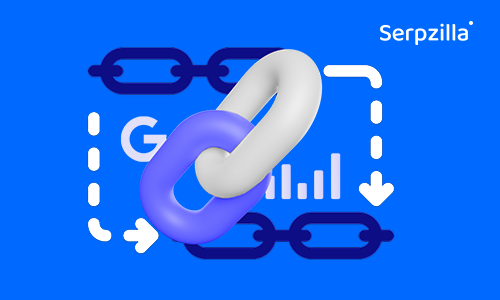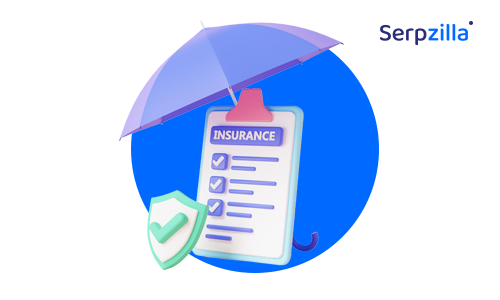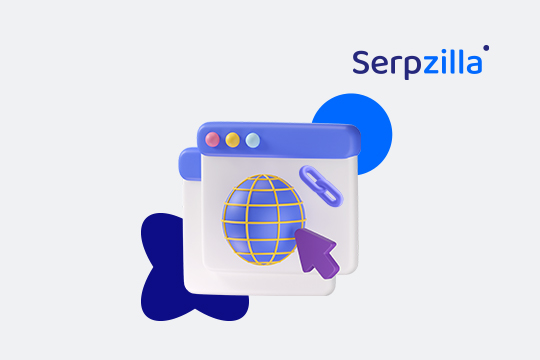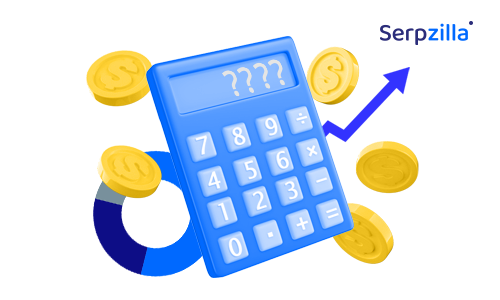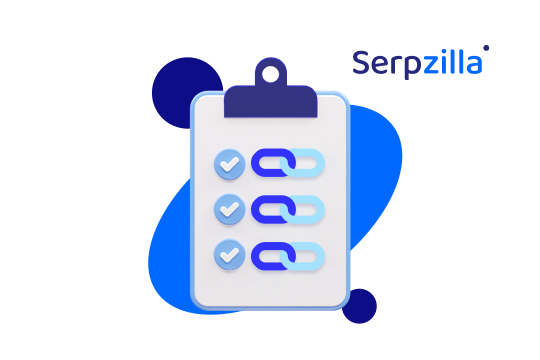For better or worse, the old “more links = better rankings” formula is no longer working so well. In 2026, link building is less about numbers and more about credibility. The winners are those who get backlinks from trusted, contextually relevant, and AI-recognized sources.
In this guide, you’ll learn how to get backlinks that do the job right in the age of AI Overviews. We’re talking the kind that brings you visibility, earns citations, and drives real traffic. You’ll also discover how to build high-quality backlinks and get backlinks even faster using Serpzilla.
How AI Overviews Changed the SEO Game Forever

The AI-generated answers you see on top of Google SERP are not just a new feature. AI Overviews (AIO) have changed how authority is measured.
Google’s algorithm used to primarily analyze content relevance and backlinks as ranking signals. Now, AI-powered Overviews evaluate sources based on credibility, freshness, and structure. In other words, it’s not enough to have backlinks. They must come from sources the AI trusts. And you need to get there.
How AIO chooses what to cite
AI Overviews rely on signals that help models go for credible content over low-value content. These signals are:
- Authority. Is the site known for expertise in the topic? Are its authors verified experts?
- Freshness. Is the content regularly updated and time-stamped?
- Structured data. Does the page use schema markup (Author, FAQ, HowTo, Product, etc.) that helps AI understand the content?
That’s why link building in 2026 is about being part of the knowledge graph, so the backlink profile itself is no longer enough. Basically, when you get backlinks from structured, reputable pages, you help AI see your website as worth citing.
Why High-Quality Backlinks Annihilate Volume
Mass link building campaigns used to deliver quick results, but it’s not the case anymore. Then how to get backlinks to your website?
Since AI-powered search systems read links in context, they can now also understand whether they add credibility or simply exist for manipulation. Large volumes of random backlinks can even backfire if they signal artificial patterns.
This tendency leads to a few major changes you should keep in mind:
- Context beats count. Just a couple of strong backlinks from pages relevant to your industry now outweigh hundreds of generic ones.
- AI recognizes intent. Links inside valuable content can carry up to 10x more weight than sidebars or comment sections. You should shoot for case studies, guides, or data reports, in other words, content that people find really useful.
- Toxic links and domains are easier to detect than ever. AI easily spots domains created solely for selling links and it ignores them.
That’s how high-quality backlinks (the kind that come from credible, topic-aligned sources) now literally annihilate volume. Your job is to start curating no-nonsense links that prove your expertise and make both Google and AI trust your site more with every mention.
What Backlinks Still Work in 2026: The Gold List
If you want to increase backlinks that still move rankings, here’s your menu to choose from. These types of links continue to perform strongly in 2026.
1. Data-driven citations
This includes things like original research, surveys, and data-backed studies. They’re great backlink magnets no matter your niche. Other websites and journalists love citing numbers, and AI models treat them as trustworthy.
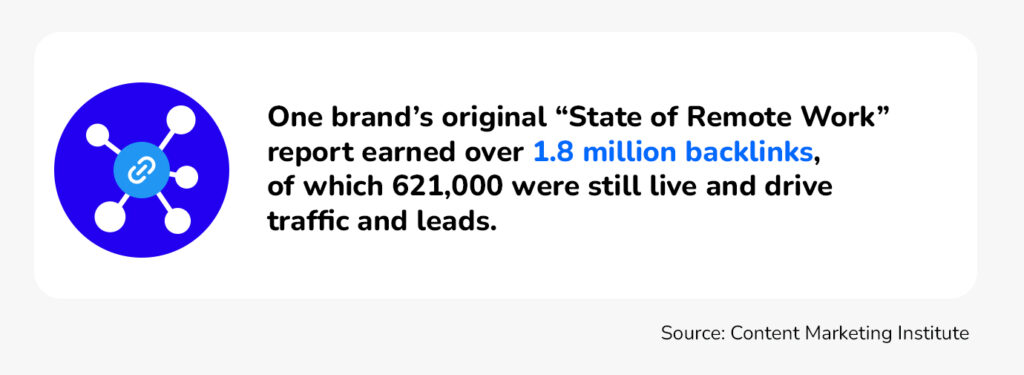
2. Tool and product listings
Being featured in high-quality comparison or roundup articles still works, that is, if the site uses transparent criteria and drives organic traffic. People like scanning through these types of listicles when they look for a new tool, a relevant product, or a brand they might purchase from.
3. Methodology references
If you develop unique frameworks, systems, or methods, others will reference them. AIO loves these kinds of pages because they show clear expertise and offer something new to audiences.
Here’s what you might try:
- How-we-did-it case studies (applications of your method that show real-world results)
- Internal benchmarks or scoring systems (your own metrics, growth models, or evaluation checklists)
- Process visuals or flowcharts (visual maps that make your methodology easy to follow and cite)
- Industry playbooks or templates (structured materials that others can adapt in their own content)
4. Expert collaborations and quotes
Take part in expert roundups, webinars, or podcasts. When hosts link back to your profile or site, the mention will act as a public endorsement of your expertise. AI Overviews interpret this as proof of real-world credibility, which is a great E‑E‑A‑T signal (more on that below).
This approach requires some active networking, and the best way to take advantage of it is to team up with people who actually speak to your audience, no random shoutouts.
5. Local and niche mentions
Small doesn’t mean weak. Local media outlets, associations, and niche blogs provide highly contextual backlinks that prove your authority in a specific segment (and that’s where your potential customers likely are).
On top of that, if you run a regional business or serve a niche market, these links can help you dominate micro‑SERPs and even AI local citations.
6. Research mentions in AI‑readable content
Backlinks inside schema‑marked content are easier for AI to connect. Pages with FAQ, HowTo, or Dataset schema make your link more visible to crawlers and AI Overviews.

Pro tip: Always do your best to format your content to be machine‑readable. Include structured data, citations, and clear author bios — that will make every backlink count.
Link Building Goals and KPIs for 2026
So, relying solely on the number of online SEO backlinks you score is not very effective. In 2026, link-building KPIs are hand-in-hand with AI visibility, E‑E‑A‑T signals, and real‑world collaborations. Pay attention to:
AI Overviews citations
Yes, this is steadily becoming the ultimate metric for modern SEO. When your page appears (or is referenced) inside AI Overviews, it’s a sign of top‑tier trust.
How to measure and improve it:
- Monitor AI citations. SERP Volatility trackers are a good tool for this purpose, or you can build custom alert systems to identify when your brand or URLs appear in AI Overviews. For example, set up brand + keyword alerts via Google Alerts.
- Reverse-engineer visibility. Study which domains AIO often cites for your niche. Then, target backlinks from those domains. It’s the fastest route to entering that trust ecosystem.
- Focus on source credibility. AI Overviews don’t just pull links, they pull entities. If your name or company is consistently mentioned on authoritative, schema-marked pages, you increase your likelihood of being cited.
- Refresh your data. Outdated stats are ignored by AIOs. Update your studies, case examples, and timestamps to maintain freshness signals.
Pro tip: monitor the number of AIO citations or mentions tied to your brand over time. It’s the clearest proxy for “AI trust.”
E‑E‑A‑T signal strength
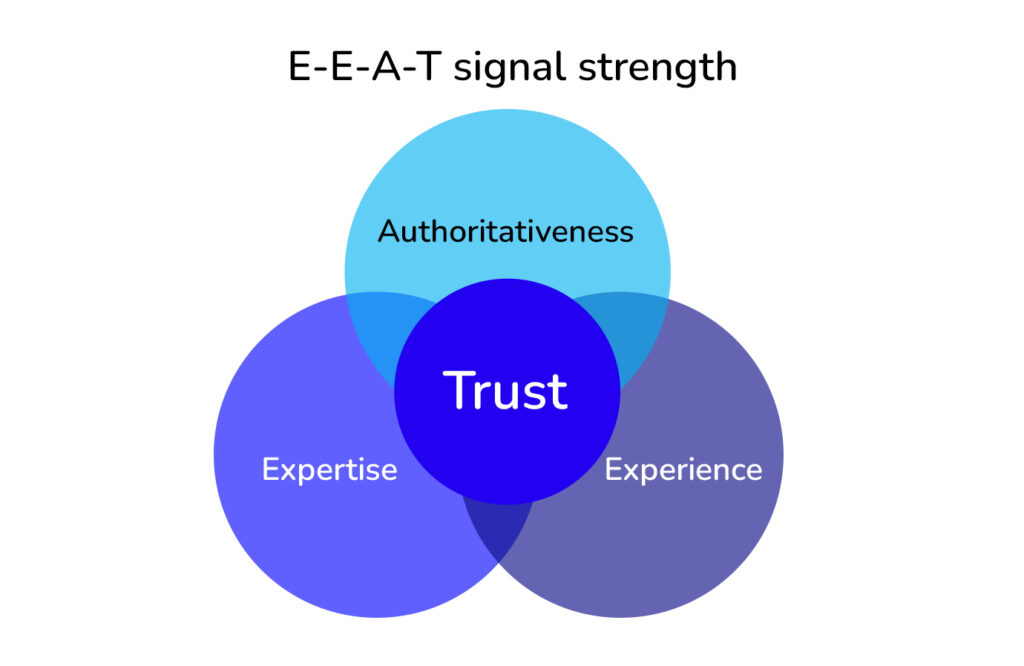
Strong backlinks now directly improve your perceived Expertise, Experience, Authoritativeness, and Trustworthiness.
To enhance E‑E‑A‑T through backlinks:
- Prioritize real authorship. Links from bylined, credible experts carry far more weight than generic blog posts.
- Collaborate the smart way. Partner with universities, research institutions, or verified professionals in your field/niche. When their content links to yours, that credibility rubs off.
- Show your work. Add clear author bios, citations, and publishing transparency. Include schema markup (Person, Organization, Author) to help search engines connect your expertise across platforms.
- Invest in guest insights (not random guest posts). Publish collaborative articles or interview pieces that provide genuine perspective over link placements just for the sake of it.
The main KPI here is growth in “expert visibility”, including mentions, co-citations, and backlinks from authoritative domains with verified authors.
Rankings for key pages
High‑quality backlinks speed up reindexing and stabilize rankings through algorithm updates. Focus on:
- Track ranking trends for 3–5 high-intent pages instead of your entire domain. Quality links to those pages often lead to domain-wide improvements.
- Measure keyword clustering performance. Do related keywords rise together? That shows your backlinks are reinforcing semantic authority.
- Watch for ranking volatility after each algorithm or AIO update. High-quality backlinks often stabilize positions during big shifts.
Pro tip: Use Serpzilla’s traffic metrics and anchor diversity filters to balance your backlink portfolio. This way, you’ll avoid anchor over-optimization and build link patterns that look organic.
Your go-to KPI here is position stability across 5–10 strategic keywords and improved click-through rate on linked pages.
Qualified referral traffic and partnerships
High-quality backlinks go beyond lifting rankings to attracting visitors who actually engage. This is where backlinks start paying for themselves.
How to maximize and measure this:
- Watch referral sessions, average session duration, and conversion rate from each referring domain. Use the analytical tools of your choice here, from Google Analytics 4 and Ahrefs.
- Discover your partnership hotspots — domains that send most traffic or business inquiries your way. Strengthen ties with them through co-marketing or joint content.
- Audit your backlink placements regularly. Links buried in footers or author bios rarely send clicks. Contextual links inside engaging content do.
- Look for brand discovery moments, like when someone finds your brand via another source. That’s the kind of exposure backlinks are meant to create.
Track KPIs like referral traffic growth, partnership conversions, and repeat mentions. When backlinks start bringing you clients, collaborations, or investors, it’s a sign that your link strategy has fully matured.
How to Get High‑Quality Backlinks Fast: The Action Plan
Enough with the theory. Here’s a step‑by‑step action plan to build strong backlinks in 2026 fast, safely, and effectively.
Step 1. Define your goal
There’s no skipping this one. Decide what you’re optimizing for:
- Rankings for specific pages
- AI Overview citations
- Referral traffic or partnerships, etc.
Knowing your goal helps you filter link opportunities strategically.
Step 2. Research link‑worthy sources
Start with Serpzilla, a smart backlink marketplace that connects you with thousands of vetted, real websites across every niche. It’s one of the easiest ways to get backlinks fast without risking your domain reputation or wasting tons of time and money on manual processes.
Use Serpzilla’s filters to find:
- High DR/DA sites with consistent organic traffic
- Niche‑relevant categories (finance, education, travel, etc.)
- AI‑friendly signals, including structured data, author bios, and topical depth
Pro tip: Avoid sites with massive outbound link counts or irrelevant content clusters. Relevance is everything.
Step 3. Evaluate context and traffic
See how the links you like will perform in the real world.
Here’s what to look for:
- Audience match. Check if the site’s readers overlap with your target audience.
- Engagement signals. Look beyond raw traffic. Do articles get comments, shares, or consistent updates? That’s a sign the site has real, returning visitors, not bots.
Placement quality. Make sure your link is woven naturally into the content. A contextual mention inside a paragraph that supports your point drives both clicks and authority. - Visibility longevity. Confirm that the page won’t be deleted or buried under dozens of new posts in a week. Evergreen content keeps passing value over time.
You can quickly check all this with tools like Serpzilla, Ahrefs, or SimilarWeb. They show traffic quality, topical relevance, engagement signals, and link placement.

Ahrefs’ traffic checker. Source: https://ahrefs.com/traffic-checker.
Step 4. Work on citeable assets
Give people (and AI) a reason to link to you. Build assets that others will naturally reference.
Here’s what you can create:
- Research studies and statistics that add something new to your niche
- Visual explainers, checklists, or comparison tables that simplify complex ideas
- Frameworks, templates, or calculators that people love to share and cite
Once your assets are live, use Serpzilla to promote them efficiently. Filter for authoritative sites in your niche and place contextual backlinks pointing to these resources. It’s the fastest way to get genuine visibility and organic citations.
Once again, remember to add schema markup to every major asset before promoting it.
Step 5. Launch a backlink building campaign via Serpzilla
This is probably the easiest step, and the one that brings you the most results.
Go back to your backlink goal. Are you aiming to improve rankings, appear in AI Overviews, or drive referral traffic? With this in mind, use Serpzilla’s smart filters to narrow backlink search results by topic, domain rating, traffic, and citation history. This way, you’re focusing only on sites already trusted by search engines and AI models.
When selecting placements, prioritize contextual links embedded within relevant articles. Mix up your anchors and use a healthy blend of brand, partial match, and generic phrases to keep your backlink profile natural and algorithm-safe.
Before confirming your link purchase, Serpzilla’s built-in safety checks automatically weed out toxic or spammy domains. Your links come only from legitimate, context-relevant sources.
Voilà, you just got backlinks that actually do their job: build trust, earn visibility, and promote your niche expertise.
Step 6. Track and scale
Measure every backlink’s performance:
- Traffic and visibility changes
- AI Overview mentions
- Domain authority growth
Double down on placements that work, cut the ones that don’t, and scale gradually. Quality backlinks compound over time.
Final Word
The best way to get backlinks for your website in 2026 is to combine strategic placement with credible content and AI‑friendly signals. Whatever you do, make sure that every link tells AI (and regular users) one thing: this source can be trusted.
If you’re ready to increase backlinks, appear in AI Overviews, and strengthen your site’s reputation, start building links the smart way.
👉 Launch your first safe backlink campaign with Serpzilla. Choose your goal, filter by relevant signals, and secure high‑quality placements that actually build authority.



